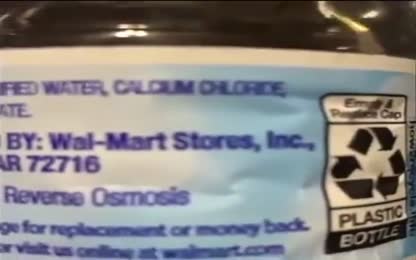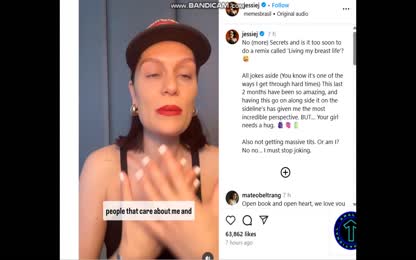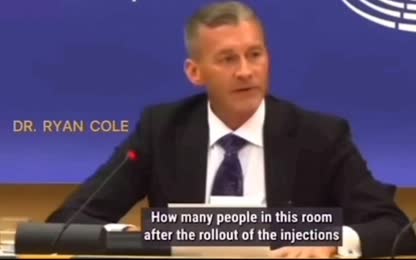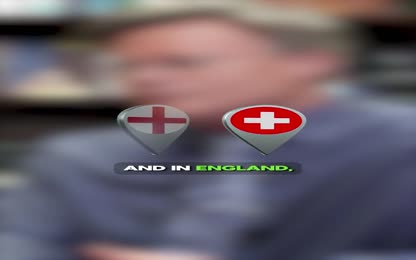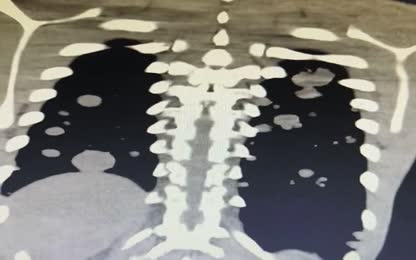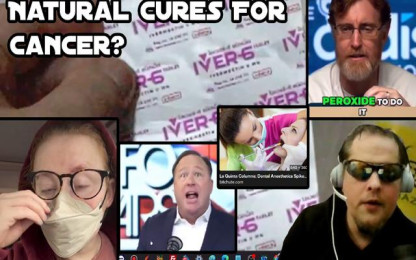Advertisement
Cosmetics, Chemicals and Cancer - By Eric Dubay
Cosmetics: Hair DIE Chemicals and Cancer
Cosmetics, Chemicals and Cancer: http://www.EricDubay.com
Did you know there is lead in most lipsticks and mercury in most mascaras!? Did you know that cancer-causing phthalates, banned from use in children’s toys, are one of the most common ingredients in many skin products? Did you know the FDA has no regulatory control over cosmetics companies, and allows them to decide their own safety standards? They don’t even have to fully label ingredients!
It is hard to believe, but it is a fact that experts say is becoming increasingly clear: most mainstream cosmetic and personal care products contain at least one hazardous chemical compound, and many contain far more than that. There are between 5,000 and 10,000 ingredients currently being used in everything from eyeliner and lipstick to shampoos and deodorants that are synthetic, unnatural, man-made chemical compounds. Many of these are assumed to be safe, but many more have been tested and proven to be dangerous and toxic. The National Institute of Occupational Safety, for example, has identified almost 900 personal care chemicals that are toxic in one way or another. Some cause cancer. Others cause hormone disruption. Some are neurotoxins. Others cause organ damage. In Europe, 1100 of these dangerous materials have been banned from consumer products. In America only 10 have been banned. Check out this excellent, comprehensive website CosmeticsDatabase.com to find exactly what chemicals are in your personal care products and exactly what health risks have been linked to each.
- Category: Cancer / Cancer Treatment,Health Concerns,Poison / Toxic,Slow Kill
- Duration: 14:42
- Date: 2021-09-15 19:50:28
- Tags: no-tag
3 Comments
Video Transcript:
Did you know there is lead in most lipsticks and mercury in most mascaras? Did you know that cancer causing fatlates, banned from use in children's toys, are one of the most common ingredients in many skin products? Did you know the FDA has no regulatory control over cosmetics companies and allows them to decide their own safety standards? They don't even have to fully label ingredients. Hey there ladies, it's time to play that game that you already play every day. Try to look pretty without poisoning yourself. Meet Jackie, she's a working mom who feels her ordinary looks need all the help they can get. Hey, Bob. Okay Jackie, let's see if you can find a cosmetic product that doesn't contain toxins and cancer causing chemicals. She's can you give me a hint? Sorry, cosmetic companies don't always have to tell you if they contain toxins. What? That's just the way the game works here. And it's how the game is played for you ladies playing along at home. Go Jackie, you lose. You poisoned yourself. That lipstick contains lead. In fact, all these cosmetics contain cancer causing chemicals. You mean I didn't even have a chance? Sorry sister, that's just the way you play. Try to look pretty without poisoning yourself. It is hard to believe, but it is a fact that experts say is becoming increasingly clear. Most mainstream cosmetic and personal care products contain at least one hazardous chemical compound, and many contain far more than that. There are between 5,000 and 10,000 ingredients currently being used in everything from eyeliner and lipstick to shampoos and deodorants that are synthetic, unnatural, man-made chemical compounds. Many of these are assumed to be safe, but many more have been tested and proven to be dangerous and toxic. The National Institute of Occupational Safety for example has identified almost 900 personal care chemicals that are toxic in one way or another. Some cause cancer. Others cause hormone disruption. Some are neurotoxins. Others cause organ damage. In Europe, 1,100 of these dangerous materials have been banned from consumer products. In America, only 10 have been banned. In a 2006 EWG study, they analyzed the umbilical cord blood of hundreds of newborn infants and found an average of 300 toxic synthetic chemicals in every baby tested. This means that these mother's bloodstreams were so full of man-made chemicals from their food, water, air, pills, vaccines, and skin products that they're transmitting these hundreds of toxic unnatural chemicals into the fresh blood of their newborns. In 2008, EWG performed another study on 20 US teenagers who used chemical cosmetics. All of the girls tested positive in their bloodstream for over a dozen known toxic chemicals used in their cosmetics. This means of course, as any dermatologist will tell you that what goes on your skin goes into your body and stays there. Chemicals, in lotions, soaps, moisturizers, deodorants, shampoos, gels, sunscreens, creams, dyes, nail polish, and removers, perfumes, colognes, foundations, blushes, eye shadow, eyeliner, mask, etc. And lipsticks, don't just get washed away. Over 70% of what touches our skin is absorbed into our bodies. The average American woman absorbs and gains 5 pounds of personal care products every year. Former Miss America Susan Jeskey has been on a mission to alert the world to the dangers of cosmetics since she had severe health issues resulting from the toxic synthetic chemicals in her skin care and beauty products. She now travels around the US and the world talking about these issues. Check out this excellent, comprehensive website CosmeticsDatabase.com to find exactly what chemicals are in your personal care products and exactly what health risks have been linked to each. Here's a short list of the top 12 toxic ingredients you'll find in your home. In fact, we call these the toxic 12. We'll talk about five of them in some detail. Once again, check these ingredients against the products you use. First, propylene glycol, butylene glycol, or ethylene glycol. Now run into your garage and check your anaphrase. Anaphrase is one of those glycols. Now, check your facial cleansers, shampoos, conditioners, toothpaste, underarm deodorants and baby products. These glycols act as surfactants, wedding agents, insolvents. They penetrate the skin fast. We can protein and sell your restructure. They're strong enough to remove barnacles from boats. The EPA warns us not to pour them into our soil, yet we smear them on our bodies. Contact with these glycols may cause brain, liver, and kidney malfunction. Yet, about one third of all the beauty and personal care products you use, morning, afternoon, and evening, contain them and do not have a warning label. Why are these glycols used in such abundance? One answer. They come cheap. The non-toxic ingredients needed to replace them are far more expensive. Now, propylene glycol is being added to many of our cookies and ice cream. It keeps them softer. You put petroleum in a cookie, and 100 years from now, it will be soft and tender. Second, sodium hydroxide. This time, check under your sink. Check out your drain-o or other sink and oven cleaners. Especially check the crystal or dry drain-o. Crystal drain-o is 100% sodium hydroxide. This is a poison. Read the warning label. Look at the skull and crossbones. Yeah, it's caustic soda line. You'll find sodium hydroxide in most common toothpaste, especially the ones claiming total or extra-wicening. I guess they figure if it cleans your drains, it'll do a good job on your teeth. It's also in many of your soaps and facial cleansers. Third, sodium laurel sulfate. Sodium laurel sulfate or ammonium laurel sulfate. These sulfates are strong detergents. They're used in garage floor cleaners and engine degreasers. Yeah, there'll be a 90% get that 90% of your beauty and personal care products that foam. Why? It's the cheapest way to create foam. They're linked to eye damage, depression, diarrhea, skin irritation, and even death. Our bodies retain these sulfates for extensive periods of time. This means that even smaller dosages amount up to higher and higher levels of toxicity in our bodies. Think of what that means to smaller bodies like infants and children. Think of the unborn infants. Any wonder why attention deficit and learning disabilities are at epidemic proportions? Fourth, DEA, MEA, or TEA. These are hormone-disrupting chemicals with ties to cancer. They're restricted in Europe yet used freely in the U.S. The EPA says the repeated applications result in major increases in liver, breast, and kidney cancer. The risk is significantly increased in children. Fifth, PEG, or polyethylene glycol. This is a carcinogenic petroleum compound that reduces the skin's natural moisture. Prolonged use seriously ages the skin. In addition, it has links to all forms of cancer. The higher the PEG content like PEG-20, 50, 100, or 120, the worse it becomes. Six, DM-DM, or Urea. These are preservatives that release from aldehyde. Seven, mineral oil. It's another petroleum product that coats the skin like saran wrap. Baby oil is 100% mineral oil. Eighth, tri-closan. It's a synthetic antibacterial with a chemical structure similar to Agent Orange. The EPA registers it as a pesticide. Ninth, Paraben, or anything that has Paraben as part of its name. They are hormone-disrupting chemicals. Tenth, isopropyl alcohol. It ages and dries the skin promoting wrinkles and brown spots. Eleven, FD and C color pigments. These are synthetic colors from Coltar. They score the highest mark on the toxic scale. Twelve, fragrances. They may contain up to 4,000 ingredients. Animal urine is most often used to create the desired smell. Well, those are the toxic 12. There's another 100 or so that should receive dishonorable mention. Additional toxicity information can be found at safecosmetics.org. Check it out. By the way, guess which occupational group has the youngest death rate? You probably guessed it. Cosmetologists. That's obviously due to increased exposure to these chemicals. Just an FYI, lawyers have the next youngest death rate. You can figure that one out for yourself. You might be asking why this is allowed to take place? Easy answer. In 1938, the cosmetic industry was granted self-regulation. Nothing has changed. Since that time, we have 25,000 chemicals marketed without government intervention, regardless of what the tests show. This is probably a good place to warn you about companies who claim their products are safe. They'll tell you not to panic that they use food grade or cosmetic grade glycoils, sulfates, solvents, or parabens. They'll tell you how mild they are and that the critics are going overboard. It's the same thing some said years ago about smoking. Smoking can't hurt you. Smoking's not a threat to health. Well, that certainly wasn't true. A few years from now, additional information will show that these same toxic products cause a threat, just like cigarettes and smoking. Women use nearly 200 toxic ingredients daily in the routine, and men use nearly 100. These toxins, even in mild forms, mount up. Stay in our bodies, store in our cells, and break down our immune system. Can I tell you, I love my panting bro V. Of the dozen or so personal care products that I use every day, it's the one I can't live without. Says it gives my dull hair the ultimate cool shine. How does it do that? I was wondering that while I was lathering it in my hair one day, sorry I read the ingredients right here. Sodium lorit sulfate, tetrasodium EDTA, methyl isothiasolinone, what is this stuff? I took this list to some scientists who know how to read it. Turns out my panting contains a chemical link to cancer, and lots of other products in my bathroom from sunscreen to lipstick, and even baby shampoo, also contain chemicals linked to cancer or other problems like learning disabilities, asthma, and even damage sperm. Like most parents, I tried to keep my family safe, but now I find out my bathroom was a minefield of toxins? What are we supposed to do? I had my body's toxicity levels tested, and I'm loaded with things like mercury, flame retardants, tricholosan, and lead. We all are, even babies are being born pre-polluted. Now I know we can't live in a lead-free world, but do we have to put lead in our lipstick? I don't know, maybe it's my fault. Maybe I just bought the wrong thing. At the store, the choices seem endless. I can get lipstick in 49 shades, or shampoo for hair that's too dry, oily, fine, limp, or frizzy. But what about the choices that really matter, like the choice of my products that are safe? It turns out the important decisions don't happen when I choose to take a product off the shelf. They happen when companies and governments decide what products should go on the shelves. So who are these companies? This is Procter & Gamble. They're the ones offering the herbal essences, the number two shampoo in the country. It contains toxic petrochemicals, made from oil, since when it's oil and herb. On cosmetics labels, words like herbal, natural, even organic, have no legal definition. That means that anybody can put anything in a bottle and call it natural, and they do. I mean, can you imagine a top seller called petro essences? Gross. What's even nastier are hair relaxers marketed to five-year-olds and skin whitening creams. These are super toxic, both in their ingredients and in the message they send about what beauty is. Oh, here's Estee Lauder offering me a chance to help find a cure for breast cancer. That's nice. But wait, they're also using chemicals linked to cancer. Do you think the best way for Estee Lauder to fight cancer is to stop using those chemicals in the first place? Today, big cosmetics companies say that doses of poison in the products are small enough to be harmless. Yeah, maybe if you use them once a year, I guess they never get out and see that the products are being used and combined with other products every day. A little toxic dose under your arms, a little more on your hair, on your lips, and workers in nail and hair salons get dosed all day long. So the industry is used to doing things this way, and they can, because even now that scientists have linked the chemicals they're using to all sorts of problems, there are no laws to get rid of them. You're thinking, really? Come on. Nobody's making sure that the stuff we smell over our bodies is safe? Nope. The FDA doesn't even assess the safety of personal care products or their ingredients. Since 1938, they've banned just eight out of over 12,000 ingredients used in cosmetics. They don't even require that all of the ingredients be listed on the label. Now, this is an example where we can all agree a little more government action would be helpful. This lack of regulation leaves a huge hole that the cosmetics industry is all too happy to fill. They set up their own committee to self-police their products, and compliance with their recommendations is voluntary. So the cosmetics industry is making the rules and then deciding whether or not to follow them. So you see, it isn't our fault that these toxic products are in our bathrooms. It's a whole broken system that's ignoring the simple rule. Toxic's in, toxic's out. But we're not helpless. There are resources online that we can use to protect ourselves by identifying the best possible choices in the store.










 Donate
Donate